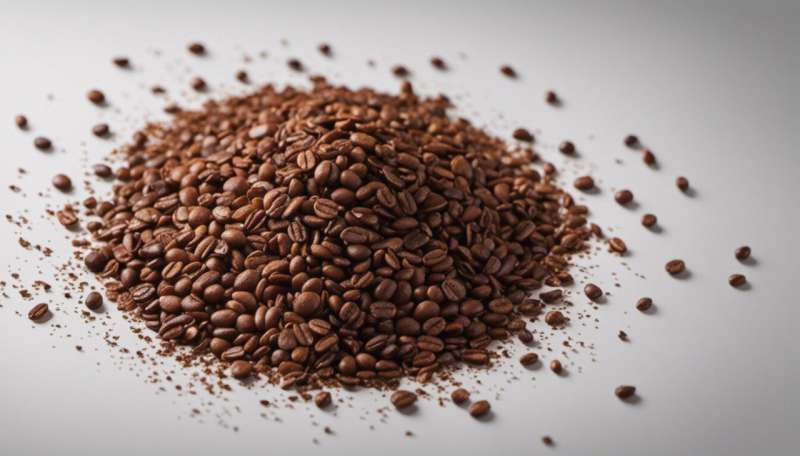Making face creams from coffee beans as cosmetics get greener

Cosmetics often use unsustainable ingredients, but new research is answering the growing demand for eco-friendly products.
"Plant ingredients have always been used in cosmetics," said Heiko Rischer, head of plant biotechnology at VTT, a Finnish research center. "But in recent years, there's been a revived interest in plant-based compounds. Consumers are interested in greener and more sustainable ingredients."
Today, most of the key ingredients used in the €80 billion European cosmetics industry are synthetic or animal-based or taken from wild plants. Producing these ingredients sometimes includes solvents or processes that are unsustainable and are becoming less popular with consumers. Harvesting wild plants also puts natural ecosystems under pressure.
Rischer and other European scientists are investigating how to get more natural and sustainable plant-based ingredients into cosmetic products.
Ecosystem pressure
The InnCoCells project that VTT is coordinating is creating alternative ingredient options by growing plants or plant cells for use in cosmetics in a sustainable way.
"We grow plant cells and organs in bioreactors," Rischer said. "But other partners grow the entire plants in aeroponics and greenhouses or in the field."
InnCoCells is researching the commercial production of innovative cosmetic ingredients from plants such as basil or aromatic ginger.
"Our work is currently in a bio-prospecting stage," said Rischer. "We evaluate different plant species for compounds. We start from a wide range of potential plants and reduce them over time."
The team aims to develop up to 10 ingredients to bring to the market within the next three years—although it's still early days for a project that started in May 2021.
"Finding our way in this jungle of plant options is a challenge," Rischer said.
The focus is on the bio-active compounds in cosmetics, meaning the ingredients that create a desired effect such as anti-aging of the skin rather than ingredients like stabilizers or fragrances. An essential part of the work in InnCoCells is to have the cosmetics do what they promise in a transparent way.
"Cosmetics need to open up the evidence, so that products actually do what they claim," said Rischer. "This would really help the consumer make choices. When we buy food, there's a lot of information on the package helping the consumer. We need to do the same for cosmetics."
Coffee creams
In a separate, just-ended, initiative to green the cosmetics industry, the Prolific project transformed plant residues into ingredients for beauty products. The team extracted polyphenols from coffee silverskins, a type of compound useful in cosmetics because of its anti-aging effects on the skin. The polyphenol extract was standardized and used in a prototype face cream.
Normally, polyphenols are already derived from plants. But the compound is extracted through a chemical procedure resulting in waste that needs to be disposed of carefully. The project applied an environmentally friendly method, called subcritical water extraction, which only uses water under very high pressure to extract the polyphenols from the coffee silverskins.
All in all, the Prolific research used a range of new processes to derive useful compounds from agricultural waste of different plant sources such as coffee beans, fungi and legumes.
"We use a cascading approach," said Annalisa Tassoni, the project's scientific coordinator and an associate professor at the University of Bologna in Italy. "We do a first extraction, after which we look at what remains and try to extract another compound."
Ultimately the residual fibers were used at different stages of production. Three prototype cosmetics were made by Greek partner company COSMETIC including a face cream, toothpaste and even a container jar that was made from plant fibers.
"We valorize all the parts of the residues," said Georgios Tsatsos, general director of COSMETIC. "This goes up to the fibers left after the extraction process."
Plant-based compounds
Several steps need to be taken before these green compounds can reach the cosmetics market. The techniques used by Prolific in processing coffee are close to being introduced into cosmetics production, but the methods need to be scaled up so that plant-based compounds can compete with synthetic ones.
"There's a lot playing in favor of this process for coffee," said Tassoni, "We opened up perspectives, and confirmed that certain techniques really work."
While it will be difficult to outcompete all of the synthetic techniques in use in the cosmetics industry, Rischer is optimistic about the outlook for more environmentally sound approaches.
"The cosmetics market is very big and diverse," he said. "Consumers are demanding more sustainable and green cosmetics, and within our own niche, we can have an impact."
More information:
Provided by Horizon: The EU Research & Innovation Magazine
















